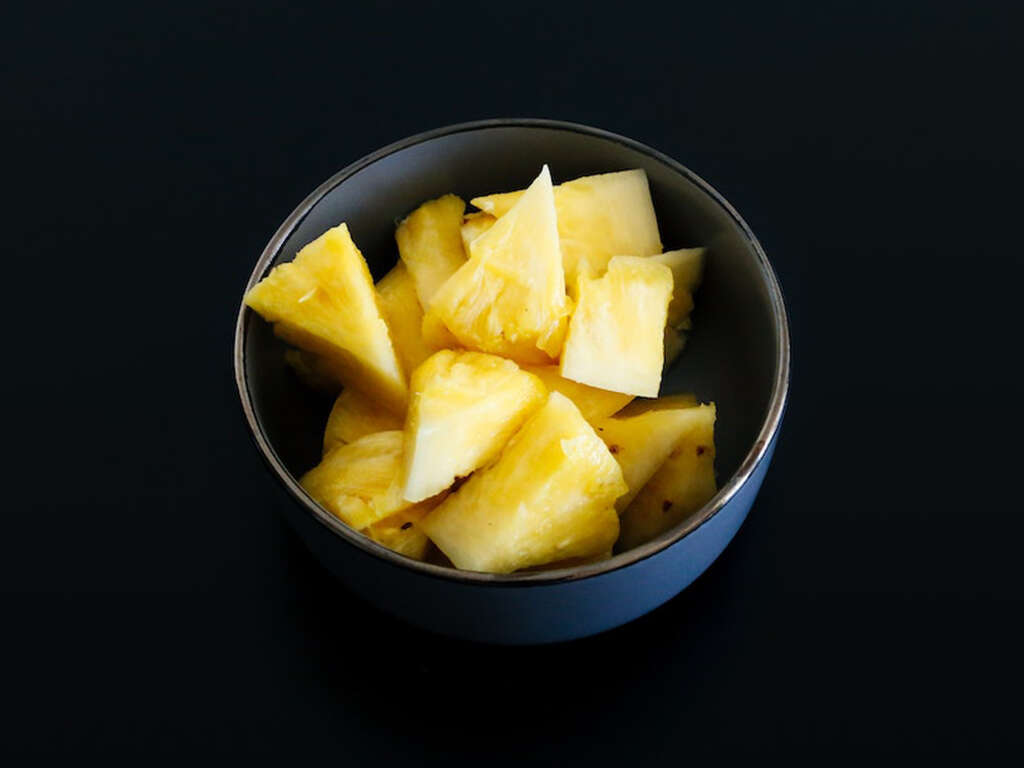Health Benefits of Grapefruits
 Article Sources
Article Sources
- 1. GC;, Murphy MM;Barraj LM;Rampersaud. 'Consumption of Grapefruit Is Associated with Higher Nutrient Intakes and Diet Quality among Adults, and More Favorable Anthropometrics in Women, NHANES 2003-2008.' Food & Nutrition Research, U.S. National Library of Medicine, 8 May 2014, pubmed.ncbi.nlm.nih.gov/25006335/.
- 2. Turner, Tami, and Betty J. Burri. Potential Nutritional Benefits of Current Citrus Consumption. Mar. 2013, www.researchgate.net/publication/281358167/Potential/Nutritional/Benefits/of/Current/Citrus/Consumption.
- 3. Lv X;Zhao S;Ning Z;Zeng H;Shu Y;Tao O;Xiao C;Lu C;Liu Y; et al. 'Citrus Fruits as a Treasure Trove of Active Natural Metabolites That Potentially Provide Benefits for Human Health.' Chemistry Central Journal, U.S. National Library of Medicine, 24 Dec. 2015, pubmed.ncbi.nlm.nih.gov/26705419/.
- 4. Abdel-Aal, El-Sayed M., et al. 'Dietary Sources of Lutein and Zeaxanthin Carotenoids and Their Role in Eye Health.' MDPI, Multidisciplinary Digital Publishing Institute, 9 Apr. 2013, www.mdpi.com/2072-6643/5/4/1169/htm.
- 5. JA;, Owira PM;Ojewole. 'The Grapefruit: an Old Wine in a New Glass? Metabolic and Cardiovascular Perspectives.' Cardiovascular Journal of Africa, U.S. National Library of Medicine, pubmed.ncbi.nlm.nih.gov/20972517/.
- 6. E;, Den Hartogh DJ;Tsiani. 'Antidiabetic Properties of Naringenin: A Citrus Fruit Polyphenol.' Biomolecules, U.S. National Library of Medicine, 9 Mar. 2019, pubmed.ncbi.nlm.nih.gov/30871083/.
Grapefruits are well-known citrus fruits. They first appeared in the 18th century as a hybrid of pumelo and oranges. Their name may seem odd for such large, spherical fruits, but the moniker was inspired by the way grapefruits grow in clusters like bunches of grapes.
Many varieties of grapefruit exist. The skin, or rind, ranges in color from bright yellow to pale yellow with a pinkish tinge. Grapefruits with white or light pink flesh are tart or bitter, while dark pink and ruby varieties have mild, sweet flavors. All grapefruit varieties are excellent sources of vitamins and other nutrients and offer other health benefits.

1. Provides Dietary Fiber
Grapefruits are a great option for adding fiber to your daily diet. A serving of grapefruit is one-half of a fruit, which provides approximately 4 grams of dietary fiber. The fruit also has a very high water content that contributes to a feeling of fullness after eating. Fiber aids digestion and supports healthy bacteria populations in the intestines.1GC;, Murphy MM;Barraj LM;Rampersaud. ‘Consumption of Grapefruit Is Associated with Higher Nutrient Intakes and Diet Quality among Adults, and More Favorable Anthropometrics in Women, NHANES 2003-2008.’ Food & Nutrition Research, U.S. National Library of Medicine, 8 May 2014, pubmed.ncbi.nlm.nih.gov/25006335/.
A significant portion of soluble and insoluble fiber is in the white pith that surrounds the sections of grapefruit flesh. Many people remove the pith, but eating as much of it as possible increases fiber intake.

2. Supports Immune System
Grapefruits contain vitamin C.2Turner, Tami, and Betty J. Burri. Potential Nutritional Benefits of Current Citrus Consumption. Mar. 2013, www.researchgate.net/publication/281358167/Potential/Nutritional/Benefits/of/Current/Citrus/Consumption. Vitamin C, also known as ascorbic acid, is a water-soluble vitamin, which means it can't be stored in the body.
Vitamin C has to be part of a regular diet for a person to stay healthy. The body can't manufacture vitamin C, and thus it has to be obtained from food. Ascorbic acid is vital for wound healing and maintaining a strong immune system. This essential vitamin is even used to metabolize certain proteins and synthesize neurotransmitters.

3. Combats Diabetes
The glycemic index, or GI, ranks carbohydrates in foods based on their effects on blood glucose levels. A rapid rise in blood glucose may cause insulin spikes. Foods with GI values below 55 are digested slowly and raise the body's blood glucose level gradually.
Most grapefruits have an average GI of 25. Grapefruit also contains naringin, which is a flavonoid compound that may reduce insulin resistance and help regulate blood glucose levels to prevent hyperglycemia.6E;, Den Hartogh DJ;Tsiani. ‘Antidiabetic Properties of Naringenin: A Citrus Fruit Polyphenol.’ Biomolecules, U.S. National Library of Medicine, 9 Mar. 2019, pubmed.ncbi.nlm.nih.gov/30871083/.

4. Lowers Cholesterol
Several studies indicate that regular grapefruit consumption can lower LDL cholesterol levels. All grapefruit types can help lower cholesterol, although red varieties seem to lower triglyceride levels more effectively.5JA;, Owira PM;Ojewole. ‘The Grapefruit: an Old Wine in a New Glass? Metabolic and Cardiovascular Perspectives.’ Cardiovascular Journal of Africa, U.S. National Library of Medicine, pubmed.ncbi.nlm.nih.gov/20972517/. Grapefruits can also increase protective antioxidants in the body.
These benefits may come from a synergistic effect of many bioactive compounds working together, such as flavonoids, naringenin, lycopene, phenolic acids, ascorbic acid and anthocyanins. Red grapefruits have higher concentrations of anthocyanins than pale varieties, as these flavonoid pigments occur in brightly colored plants.

5. Fights Free Radicals
Flavonoids are a type of bioactive compound, known as phytochemicals, with antioxidant properties. Grapefruit contains high concentrations of flavonoids and other antioxidants, such as vitamin C and lycopene.3Lv X;Zhao S;Ning Z;Zeng H;Shu Y;Tao O;Xiao C;Lu C;Liu Y; et al. ‘Citrus Fruits as a Treasure Trove of Active Natural Metabolites That Potentially Provide Benefits for Human Health.’ Chemistry Central Journal, U.S. National Library of Medicine, 24 Dec. 2015, pubmed.ncbi.nlm.nih.gov/26705419/.
These antioxidants may offer some protection from cancer by disrupting the formation of harmful free radicals. Phytochemicals also have anti-inflammatory properties that may reduce the risk of some chronic illnesses, such as arthritis, cognitive degeneration, atherosclerosis, ulcerative colitis and autoimmune disorders.

6. Helps Remove Toxins
Limonoids are another type of phytochemical found in grapefruits.2Turner, Tami, and Betty J. Burri. Potential Nutritional Benefits of Current Citrus Consumption. Mar. 2013, www.researchgate.net/publication/281358167/Potential/Nutritional/Benefits/of/Current/Citrus/Consumption. A long-acting limonoid called limonin encourages the production of a detoxifying enzyme. This enzyme prompts reactions in the liver that make some toxic compounds water soluble so they can be flushed out of the body more easily.
Limonin remains in the bloodstream for up to 24 hours after consumption. The detoxifying effects of limonoids may reduce the risk of breast, stomach, colon, lung, skin and oral cancers, although more research is needed to confirm its anti cancer benefits.

7. Protects Eye Health
Zeaxanthin and lutein are carotenoids found in many colorful fruits and vegetables, including grapefruits. Carotenoids protect the macular area of the retina in the eyes.4Abdel-Aal, El-Sayed M., et al. ‘Dietary Sources of Lutein and Zeaxanthin Carotenoids and Their Role in Eye Health.’ MDPI, Multidisciplinary Digital Publishing Institute, 9 Apr. 2013, www.mdpi.com/2072-6643/5/4/1169/htm. Lutein has anti-inflammatory properties and may help prevent macular degeneration.
Grapefruits are a rich source of vitamin A in the form of beta carotene. Vitamin A is essential for healthy skin and the mucosal cells that protect the eyes from infection, and the eyes need vitamin A for normal retina function and night vision.

8. Source of Folate
Folate, also known as folic acid or vitamin B9, is an essential vitamin, especially during pregnancy. Folate is necessary for cellular reproduction and DNA synthesis, and a deficiency during pregnancy may lead to neural tube defects and other complications.
Adults with insufficient folate are at a higher risk of cardiovascular disease and may experience seizures. Many B vitamins are lost through cooking and other types of food processing, so eating fresh, unprocessed grapefruit is an excellent way to add folate to a person's diet.3Lv X;Zhao S;Ning Z;Zeng H;Shu Y;Tao O;Xiao C;Lu C;Liu Y; et al. ‘Citrus Fruits as a Treasure Trove of Active Natural Metabolites That Potentially Provide Benefits for Human Health.’ Chemistry Central Journal, U.S. National Library of Medicine, 24 Dec. 2015, pubmed.ncbi.nlm.nih.gov/26705419/.

9. Inhibits Kidney Stones
Grapefruit, like all citrus fruit, contains citric acid. Although citric acid isn't considered a nutrient, it does offer some health benefits.2Turner, Tami, and Betty J. Burri. Potential Nutritional Benefits of Current Citrus Consumption. Mar. 2013, www.researchgate.net/publication/281358167/Potential/Nutritional/Benefits/of/Current/Citrus/Consumption. Citric acid raises pH levels in urine and may break up small kidney stones or discourage the formation of new stones.
A citric acid coating around existing stones can also stop new material from adhering to the stone's exterior surface. Grapefruit juice may be helpful in preventing kidney stones because it assists with hydration and provides citric acid.

10. Enhances Cardiovascular Health
Incorporating grapefruit as part of a regular diet may benefit cardiovascular health in several ways.5JA;, Owira PM;Ojewole. ‘The Grapefruit: an Old Wine in a New Glass? Metabolic and Cardiovascular Perspectives.’ Cardiovascular Journal of Africa, U.S. National Library of Medicine, pubmed.ncbi.nlm.nih.gov/20972517/. Grapefruit contains potassium, which is essential for regulating fluids and controlling blood pressure. Increased levels of potassium encourage the kidneys to excrete more sodium and lessens tension on blood vessel walls.
Lycopene, another nutrient found in grapefruit, can potentially lower blood pressure by reducing the thickness of blood vessel walls and enhancing arterial dilation. The folate found in grapefruits is also used to produce healthy red blood cells.











